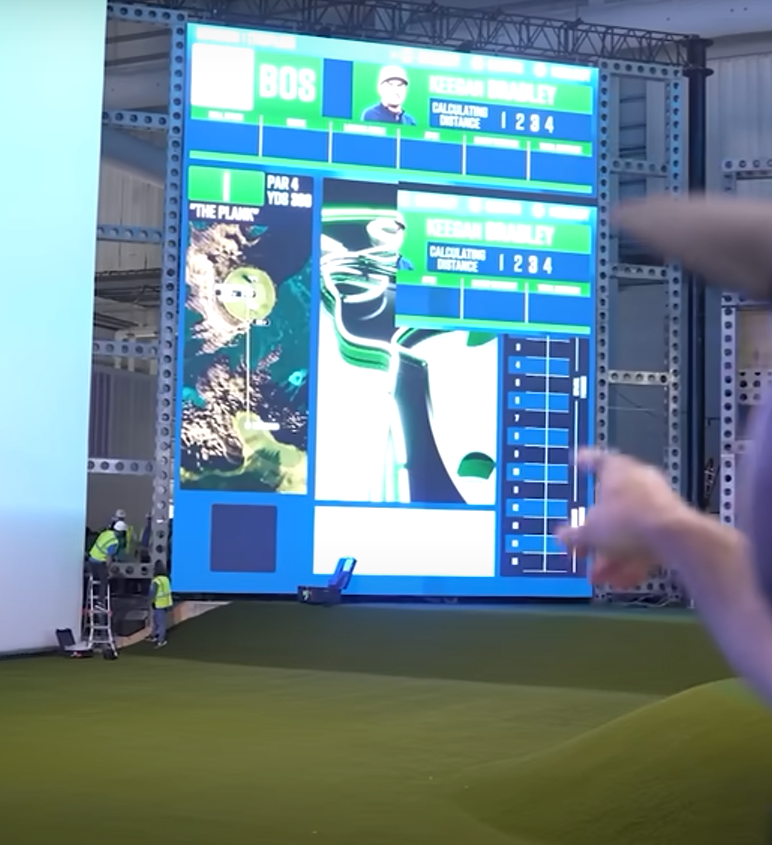The AV Technology Behind Tiger Woods' TGL
TGL (or Tomorrow’s Golf League) is a revolutionary concept combining the latest in golf simulator technology with some pretty impressive AV technology. In this article, we’ll take a look at the technology driving SoFi Center and how commercial AV solutions work to elevate the presentation of this new league.
The Main Attraction: The ScreenZone
The first thing you’ll likely notice when tuning into the TGL is the massive 64 foot high screen driving the golf simulator experience. Having a screen this large is more than a luxury—this screen provides an immersive experience for all the teams, and brings the Welling, Nicklaus, and Piza custom designed holes to life.
The projection system is driven by an array of 9 projectors hidden in the trusses of the SoFi center. These projectors each handle one part of the image, with the edges of each projectors image blended together to form one continuous image. While we haven’t been able to find the exact specifications of what projectors they’re using, they appear to be 3-chip laser projectors, likely with 20,000 or more lumens of brightness. This would provide enough brightness to have adequate contrast in the bright staging lights needed for broadcast.
The Virtual Caddy and Scoreboard
The main simulator screen is flanked on either side by two massive LED walls. These displays have been built using Samsung’s Direct View LED panels. Because each pixel is it’s own light, these displays have extremely high contrast and look fantastic on the broadcast. In the case of an errant shot, individual 500 millimeter by 500 millimeter panels can be easily replaced without needing to completely disassemble the display.
The TGL set also features smaller “virtual caddy” displays for golfers to use while their competition is hitting. These use Samsung’s capacitive touch interactive displays, providing great responsiveness for the Full Swing simulation software. These displays use the same technology as Samsung’s interactive hospitality kiosk, just in a slightly different form factor.
The GreenZone
Simultaneously the highest and lowest-tech part of the TGL, the GreenZone brings the virtual courses to life with a motorized green that can automatically change contours for each hole of competition. This technology is very impressive, but the AV portion of it is decidedly lower tech. Once the motorized green has morphed into place, a moving head spotlight projects the ball placement onto the green surface. This is accomplished by having the simulation software send coordinate data to the light fixture—however, how this is done is a closely guarded secret that TGL and Full Swing have been unwilling to disclose by now.
Adding the TGL Simulator Technology to Your Simulator
While the simulator setup used by TGL has been custom built, there are a few ways you can use the same technology for your home or business golf simulator.
Full Swing Launch Monitors
TGL uses a custom mix of Full Swing's HyperClear cameras and launch monitors to track ball flight—and you can do the same. Full Swing offers a variety of different simulator packages, from a basic launch monitor setup to a multi-camera setup to catch every angle of your best (and worst) shots. Full Swing’s simulation software also has the official license for PGA and TPC courses, providing a nearly never-ending supply of the world’s most challenging courses
Virtual Green
The same technology that powers the green on the TGL set is also available in smaller form factors. The Virtual Green comes in two different sizes, but can also be custom ordered for larger installations. While the system does provide an impressive level of insight into your putting, it comes at a price—the smallest green starts at $80,000 USD.
High Quality Projectors
If you already have an existing golf simulator, one of the best upgrades you can make is to a modern laser projector. Improved brightness and contrast ensure better visibility in various lighting conditions, eliminating washed-out images. Additionally, upgrading to a laser projector reduces maintenance needs and increases longevity compared to older lamp models. This investment elevates your simulator's performance and transforms your practice sessions into a more engaging and effective training tool.



